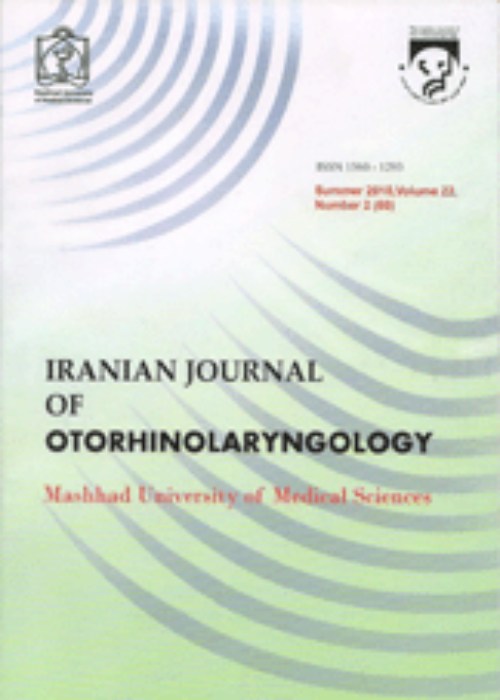Cleft lip and Palate: A 30-year Epidemiologic Study in North-East of Iran
Author(s):
Abstract:
Introduction
Cleft lip and palate are among the most common congenital anomalies worldwide. This study was conducted in order to explore the incidence and related factors of cleft lip and/or palate (CL/P) among live births in Mashhad, North-Eastern Iran. Materials And Methods
In this cross-sectional study, records of 28,519 infants born between March 1982 and March 2011 at three major hospitals in Mashhad were screened for oral clefts. Clinical and demographic factors relating to diagnosed cases, including birth date, gender, birth weight, maternal age, number of pregnancies, type and side of cleft and presence of other congenital anomalies were recorded for analysis. Results
The overall incidence of CL/P was 1.9 per 1,000 live births. Cleft lip associated with cleft palate (CLP) was the most prevalent type of cleft (50%), followed by isolated cleft lip (35.2%) and isolated cleft palate (14.8%). A total of 92.6% of oral clefts were bilateral and 5.5% were located on the right side. In addition, clefts were found to be more common in male than female births (male/female ratio=2.3). The rate of associated congenital anomalies in CL/P newborns was 37%. No significant differences were observed in the incidence of oral clefts across three decades of study; except for CLP which was significantly more prevalent between 2002–2011 (P=0.027). There were no significant differences with regard to season of birth, associated anomalies or maternal age of affected newborns in the three time periods of the study. Furthermore, maternal age and number of pregnancies were not significantly different among the three types of cleft (P=0.43 and P=0.91, respectively). Although the mean birth weight of patients affected with isolated cleft palate was considerably lower than that of the other two types of cleft, the difference was not statistically significant (P=0.05). Conclusion
This study indicates a frequency of CL/P close to the findings in East Asian countries and higher than some previous reports from Iran, European and American countries. Ethnicity-related genetic factors may have a role in the conflicting results obtained from different populations.Keywords:
Cleft lip , Cleft palate , Incidence , epidemiology , Iran
Language:
English
Published:
Iranian Journal of Otorhinolaryngology, Volume:27 Issue: 1, Jan 2015
Pages:
35 to 41
magiran.com/p1351191
دانلود و مطالعه متن این مقاله با یکی از روشهای زیر امکان پذیر است:
اشتراک شخصی
با عضویت و پرداخت آنلاین حق اشتراک یکساله به مبلغ 1,390,000ريال میتوانید 70 عنوان مطلب دانلود کنید!
اشتراک سازمانی
به کتابخانه دانشگاه یا محل کار خود پیشنهاد کنید تا اشتراک سازمانی این پایگاه را برای دسترسی نامحدود همه کاربران به متن مطالب تهیه نمایند!
توجه!
- حق عضویت دریافتی صرف حمایت از نشریات عضو و نگهداری، تکمیل و توسعه مگیران میشود.
- پرداخت حق اشتراک و دانلود مقالات اجازه بازنشر آن در سایر رسانههای چاپی و دیجیتال را به کاربر نمیدهد.
In order to view content subscription is required
Personal subscription
Subscribe magiran.com for 70 € euros via PayPal and download 70 articles during a year.
Organization subscription
Please contact us to subscribe your university or library for unlimited access!


